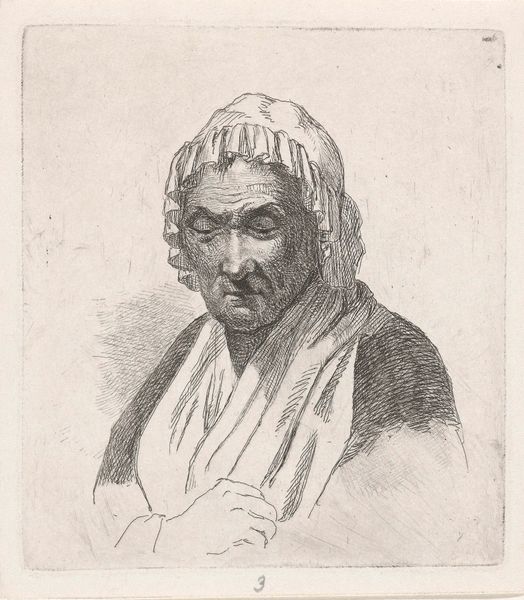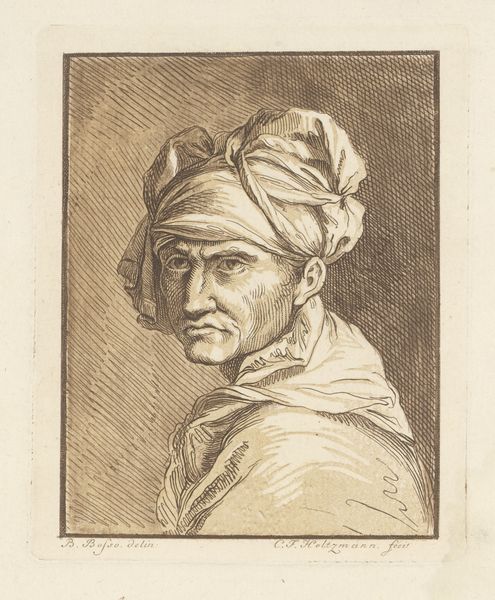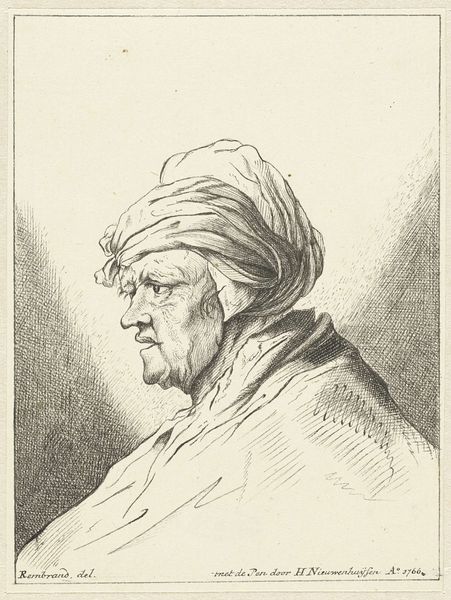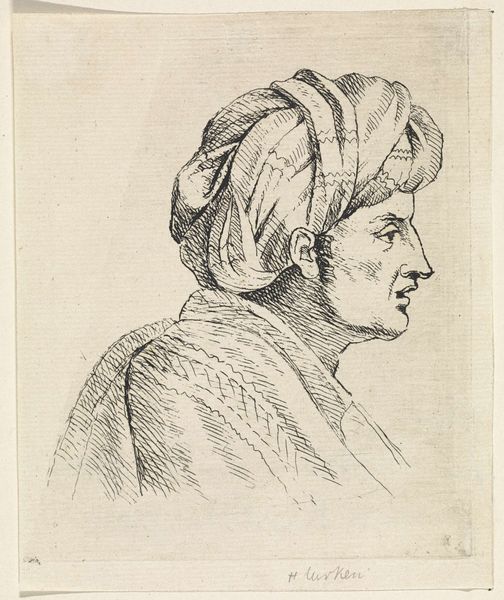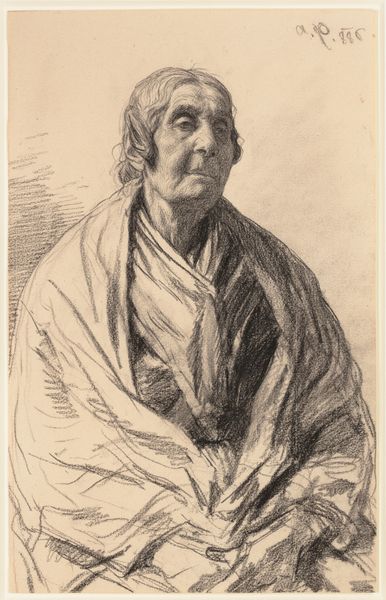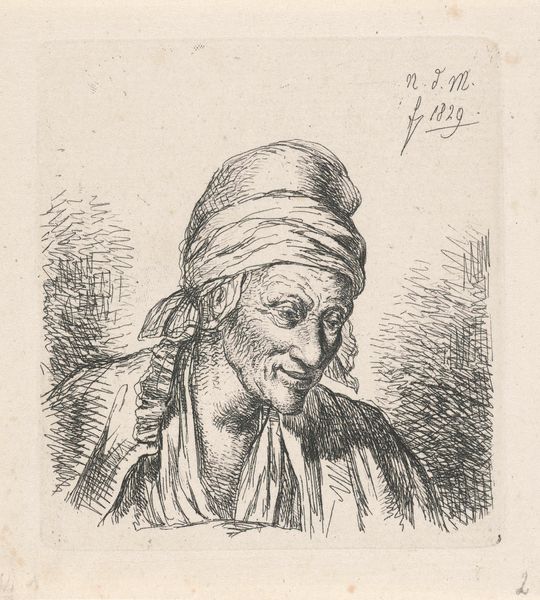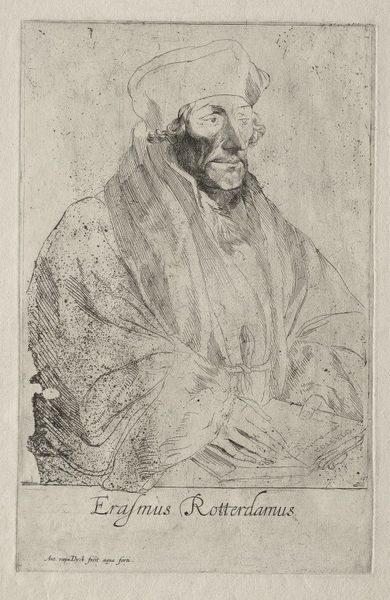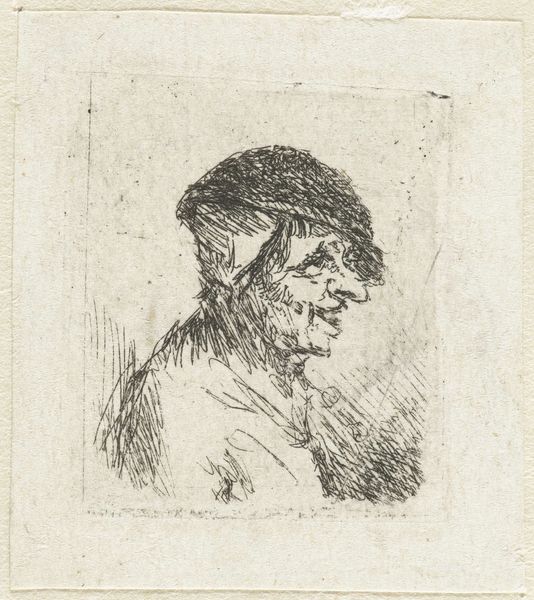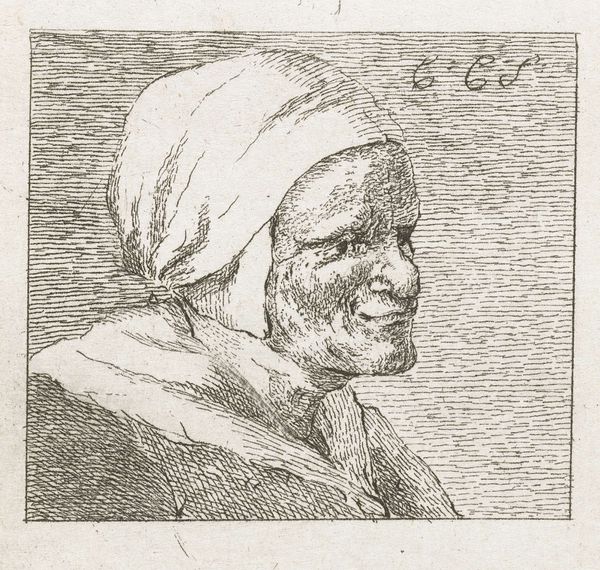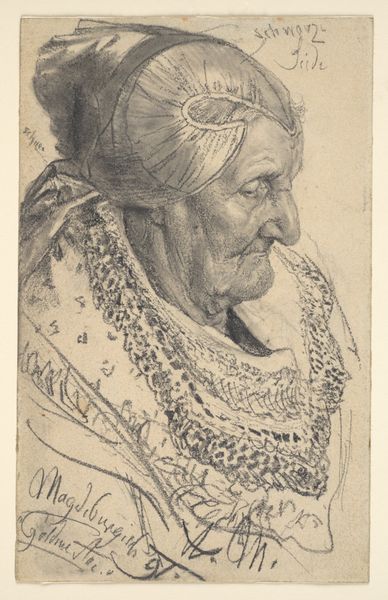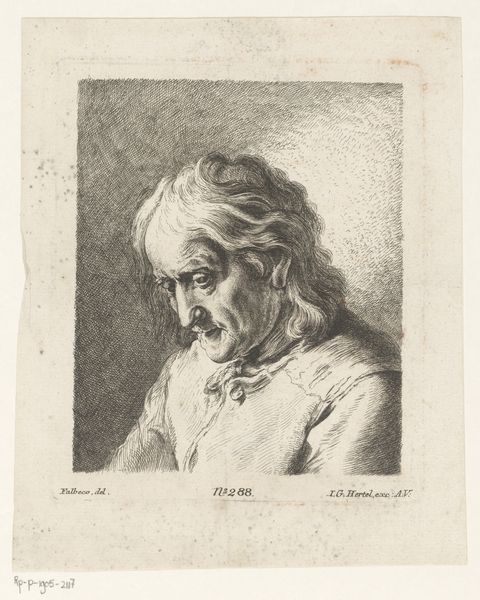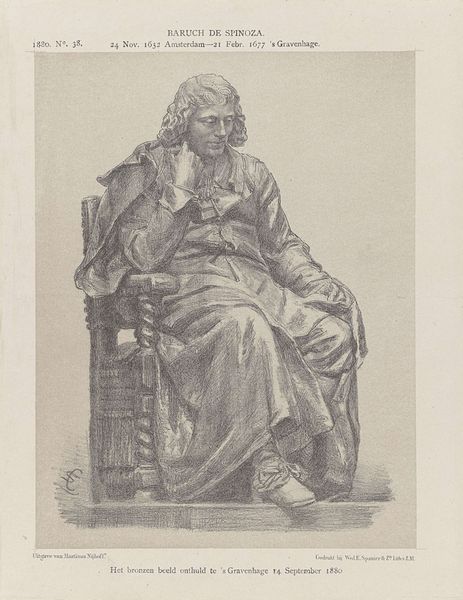
drawing, print, etching
#
portrait
#
pencil drawn
#
drawing
#
facial expression drawing
#
light pencil work
# print
#
etching
#
pencil sketch
#
personal sketchbook
#
pencil drawing
#
pen-ink sketch
#
sketchbook drawing
#
portrait drawing
#
pencil work
#
realism
Dimensions: height 101 mm, width 90 mm
Copyright: Rijks Museum: Open Domain
Curator: This is "Oudere vrouw," or "Older Woman," a print and etching made sometime between 1814 and 1879 by David van der Kellen. It’s currently held at the Rijksmuseum. Editor: The linework is fascinating. It feels very immediate and personal, almost like a quick sketch from a personal sketchbook. The detail is focused around the face, and then fades away towards the shoulders. What strikes you about this portrait? Curator: The fact that it’s a print, rather than a unique drawing, opens up some interesting avenues of thought. How does the choice of etching as a means of production affect our understanding of this image? The materiality of the etching plate itself, the labor involved in its creation and printing—these all influence how we perceive this ‘sketchlike’ quality you observed. Editor: That’s a great point. It appears so freehand, yet the etching process involved a significant amount of controlled labor and skill, right? It challenges our expectations of the medium. Curator: Precisely! And let’s think about the function of prints during that era. This wasn’t high art destined for a wealthy patron’s gallery. Prints were more accessible, circulated more widely. Did van der Kellen see this as a study? A prototype for something more? Or as a finished piece in its own right, designed for wider consumption? Editor: So you are saying that the value isn’t necessarily placed on the ‘originality’ that we often associate with art, but perhaps on the artist’s ability to reproduce and distribute? I hadn’t thought of it that way. Curator: Exactly! Consider the socio-economic context: Who was consuming these prints? How did their access to art via this medium shape their perceptions? Van der Kellen's choice of materials and method fundamentally changes the relationship between the artwork and the broader public. Editor: I see that! Thinking about it this way definitely moves me beyond just the woman’s likeness and more into understanding its historical reach through labor and distribution. Curator: I think focusing on those aspects of production can allow us to think deeply about not just what’s depicted but how art circulated as part of society. Editor: It adds another fascinating dimension to understanding artwork like this; thank you.
Comments
No comments
Be the first to comment and join the conversation on the ultimate creative platform.
